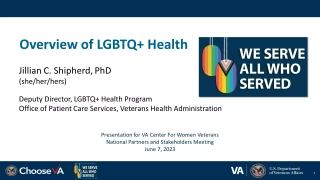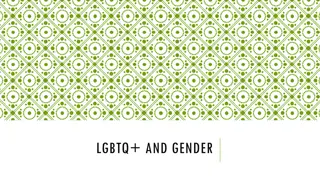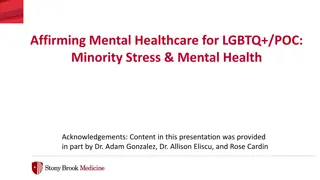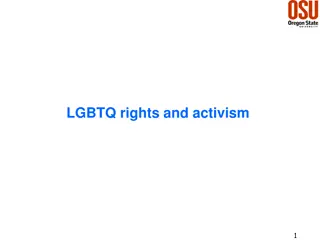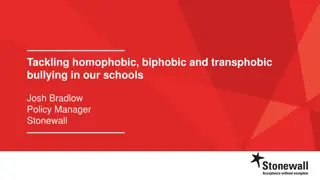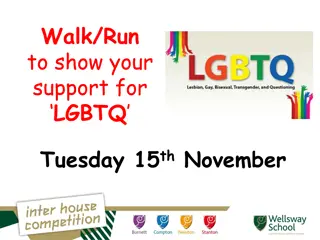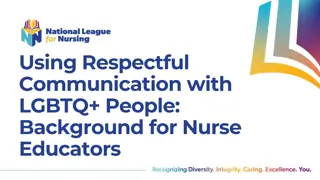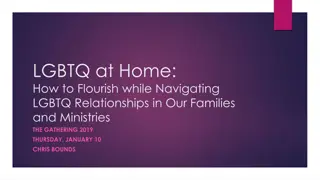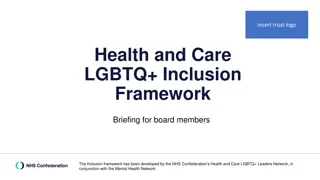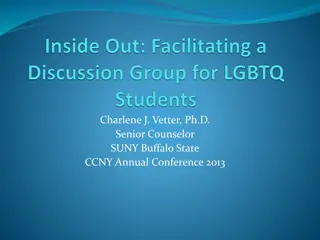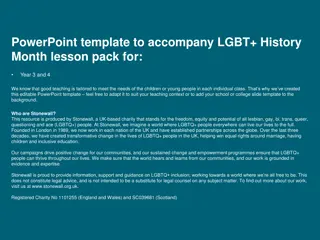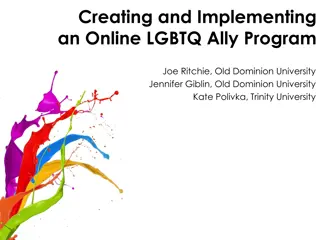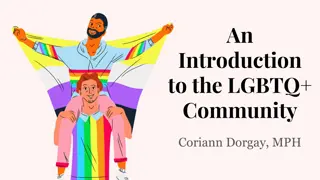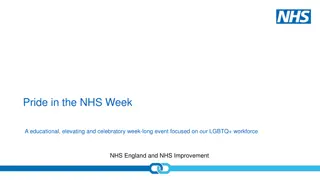Understanding LGBTQ+ Glossary Terms
Explore a visual collection of LGBTQ+ glossary terms through images that depict concepts such as biphobia, gender expression, and pansexuality. Each image represents a crucial aspect of gender identity and sexual orientation, providing a comprehensive overview of diverse identities and experiences within the LGBTQ+ community.
Download Presentation

Please find below an Image/Link to download the presentation.
The content on the website is provided AS IS for your information and personal use only. It may not be sold, licensed, or shared on other websites without obtaining consent from the author. Download presentation by click this link. If you encounter any issues during the download, it is possible that the publisher has removed the file from their server.
E N D
Presentation Transcript
Gender reassignment
Gender recognition certificate (GRC)
Heterosexual / straight
Transgender woman/trans woman
Transgender man/trans man
Another way of describing a persons transition. To undergo gender reassignment usually means to undergo some sort of medical intervention, but it can also mean changing names, pronouns, dressing differently and living in their self- identified gender. Gender reassignment is a characteristic that is protected by the Equality Act 2010, and it is further interpreted in the Equality Act 2010 approved code of practice. It is a term of much contention.
An umbrella term used to describe a variation in levels of romantic and/or sexual attraction, including a lack of attraction. Such people may describe themselves using one or more of a wide variety of terms, including, but not limited to, asexual, aromantic, demis and grey-As.
A persons innate sense of their own gender, whether male, female or something else (see non-binary below), which may or may not correspond to the sex assigned at birth
The process of exploring your own sexual orientation and/or gender identity.
An umbrella term used to describe an emotional, romantic and/or sexual orientation towards more than one gender. Such people may describe themselves using one or more of a wide variety of terms, including, but not limited to, bisexual, pan, bi-curious, queer, and other non-monosexual identities.
The fear or dislike of someone who identifies as bi based on prejudice or negative attitudes, beliefs or views about bi people. This type of bullying may be targeted at people who are, or who are perceived to be, bi.
Someone whose gender identity is the same as the sex they were assigned at birth. Non-trans is also used by some people.
Calling someone by their birth name after they have changed their name. This term is often associated with trans people who have changed their name as part of their transition.
Refers to a man who has an emotional, romantic and/or sexual orientation towards men. Also a generic term for lesbian and gay sexuality - some women define themselves as gay rather than lesbian.
Often expressed in terms of masculinity and femininity, gender is largely culturally determined and is assumed from the sex assigned at birth.
Used to describe when a person experiences discomfort or distress because there is a mismatch between their sex assigned at birth and their gender identity. This is also the clinical diagnosis for someone who doesn t feel comfortable with the sex they were assigned at birth.
How a person chooses to outwardly express their gender, within the context of societal expectations of gender. A person who does not confirm to societal expectations of gender may not, however, identify as trans.
A term used in medical law to decide whether a child (under 16 years of age) is able to consent to their own medical treatment, without the need for parental permission or knowledge.
Refers to a man who has an emotional, romantic and/or sexual orientation towards women or to a woman who has an emotional, romantic and/or sexual orientation towards men.
This enables trans people to be legally recognised in their affirmed gender and to be issued with a new birth certificate. Not all trans people will apply for a GRC and you currently have to be over 18 to apply. You do not need a GRC to change your gender markers at work or to legally change your gender on other documents such as your passport.
This might be considered a more medical term used to describe someone who has an emotional romantic and/or sexual orientation towards someone of the same gender. The term gay is now more generally used.


